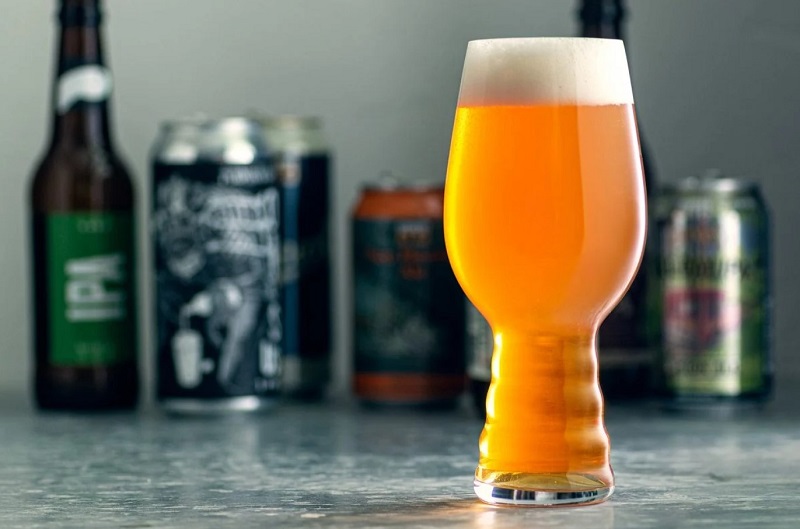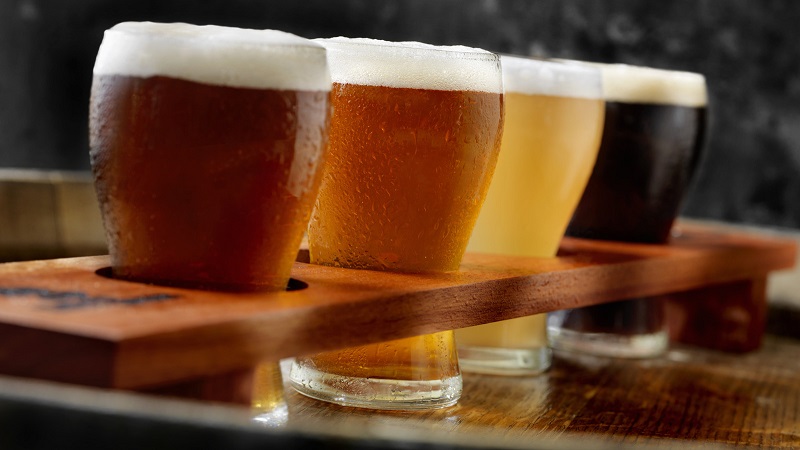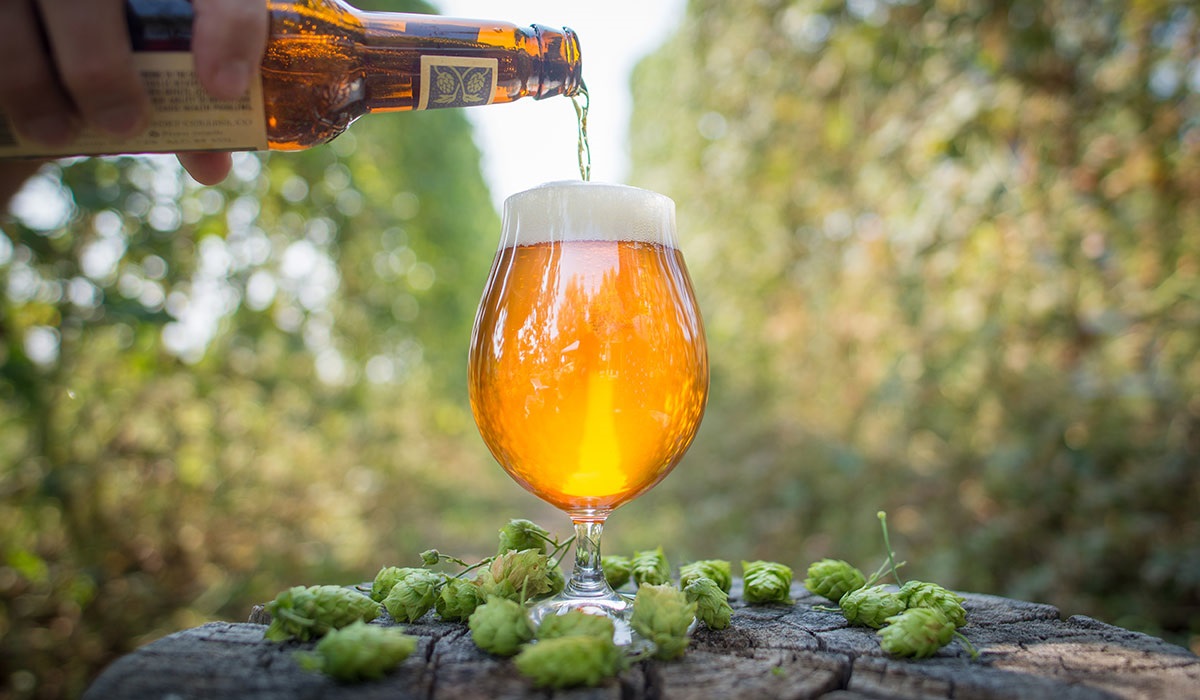Did you know that there are over 100 different beer styles in the world? This includes the main styles ale or lager, and their sub-styles Belgian, German, Irish, British, International, North American, European, hybrids and much more. The IPA or Indian pale ale is one of the most controversial ones. Some people love it, and some hate it, there’s no in-between. But one thing is for sure, once you try it, you’ll think about it.
Short History of IPA

We should start by saying that IPAs aren’t called Indian pale ales because they’re from India or are brewed in India. Although there is some disagreement as to the precise origin of the IPA beer style, most experts agree that it got the name because in the late 1700s and early 1800s, this beer was prepared to be shipped to India.
By shipping beer to India, the English Empire solved the problem of providing beer to its colonies in the east. India is a hot country and brewing beer there at that time was impossible to do. So, British brewers found a way to make a beer that could withstand the 6-month journey from England to the East. They added more hops (which are a natural preservative) and brewed it to a higher strength.
That’s how the delicious and flavourful IPA craft beers were created. Because of the higher hop ratio, these beers were more bitter and had a higher alcohol content. Plus, they’re more carbonated and their flavours are more dominating. Of course, the beers survived the trips to India and became the prototype for today’s IPAs.
Over time, they became more refreshing and paler, just to suit the Indian climate. Since then, IPAs gained popularity and have spread all over the world. People loved them and started developing their own recipes in America, Europe and Asia.
How to Brew IPA
A conventional recipe for IPA calls for English malt, hops, and yeast. It’s a pretty robust, hoppy pale ale. An IPA’s flavour is dominated by hops, thus adding the right amount of hops is essential for making a successful beer. The English IPAs are made of popular English hops such as Goldings, Target, Fuggles and Nortdown.
To add a more bitter flavour, they sometimes use hops with higher alpha levels. The American IPAs use Willamette, Centennial and Cascade hops, or hops with higher alpha levels for a more bitter taste. They add the bittering hops at the beginning of the brew, finishing hops in the last 10-15 minutes. Breweries also add dry hops to add a specific aroma to the beer.
Another thing that brewers look out for is the balance between the beer’s flavours. IPA with a higher alcohol % responds to the hops differently than IPA with a lower alcohol content. Let’s not forget that more alcohol gives the beer a fuller body and some sweetness.
To get the right amount of bitterness, brewers use a formula. This formula makes calculations between the amount of hops used and their alpha acid contents. IPAs with a higher IBU level will be around the 100-120 mark, and the average IPAs will have an IBU of 40-60. To finish everything, brewers store the fermented beer at around 15 degrees Celsius.
Different Styles of IPA

English IPA
As we already mentioned, the English IPAs are the original ones. It all started in England. They often have a golden-brown colour and only contain British hops. These beers have a dry finish and a hoppy aroma and taste. They’re not so strong and have a well-thinned body.
If they’re made with the classic ingredients, these IPA craft beers will give you the best flavour profile there is. Some of the notes you can get are grassy, earthy and a bit citrusy. On average, they have an ABV (alcohol by volume) of 6-7%. Their crisp body and dry finish will soon become your favourite.
American West Coast IPA
The American West Coast was the pioneer of creating a fruity hop IPA flavour. These brewers started exploring the bold fruity flavours with hops and started eliminating some of the existing bitterness. This doesn’t mean they’re not bitter. It means the bitterness is well-balanced with the sweetness of the fruits.
These beers have a golden colour. Their brewers cut down the malt extract and focus on the hop flavour. For the most part, they’re inspired by the British style IPA. West Coast IPAs can have up to 80 IBUs of bitterness and can be a bit drier because brewers use crystal malt to make them.
East Coast IPA
These are some of the most popular IPAs in the world. These beers are very balanced and have a stronger malt content. This is made to match the strong hops content. But despite this, East Coast IPAs have a pleasant bitter taste no one can resist. One thing that makes them stand out is the yeast. Brewers use complex, mutated yeast to make these beers.
As they ferment the sugar, these yeasts create a lot of flavours. Some of the most popular ones are banana, stone fruit and tropical notes. These tastes do not overpower the beer, they just complement the intense aroma of the hops. This creates less hazy beers which are less bitter and have a smooth texture.
Double & Tripple IPA
The double IPA is also known as the Imperial IPA. This is a very strong, hoppy Indian pale ale. The adjective “double” simply means that this beer has stronger and higher hop levels. Despite this, it’s still dry, clean and balanced. Even though everything, from malt to hops is doubled, this beer is still very pleasant to drink. Of course, the alcohol content is higher. It’s usually somewhere between 7.5-10%.
The triple IPA takes everything to the next level. It has even more malt and hops and brings an intense flavour. The breweries pushed everything to its limits and made the hardest and strongest IPA on the market. This is a beer that has very high alcohol levels (for a beer) and they can be between 12-13%. So, if you’re a beginner, it’s not a good idea to start drinking them first.
Belgian IPA
Belgian breweries use Belgian yeast. This is the ingredient that gives these beers a warm, sweet and bready overtone. These IPAs are also blessed with rich complex flavours and have a higher ABV than the basic IPAs. The percentage is somewhere between 7-10% so don’t rush to chug a lot of them in a hurry.

Leave a comment